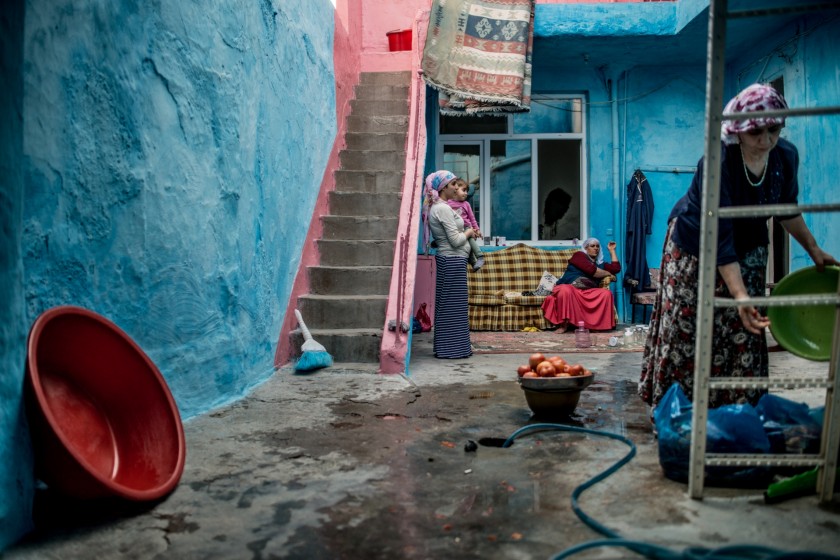
Diyarbakir's Sur - Spirit Under Curfew
By Anush Babajanyan
A Kurdish tale, told in melancholic trance by Dengbej singers, tells of a story, one of many, that's haunted Diyarbakir for more than a hundred years.
Zembil Firos was a seller of baskets. The young Kurdish man was deeply in love with an Armenian woman, the daughter of a rich father. She too was in love with Zembil Firos, but her father was against their marriage. One night, the couple ran away. As word spread throughout Diyarbakir of the lovers’ flight, her father ordered men to follow. When found, the woman and Zembil Firos were killed.
Since ancient times, the region of Anatolia and the city of Diyarbakir, Turkey, have been the tragic hosts of countless bloody events. In these lands, situated at the crossroads of Anatolia and the Caucasus, people have loved each other, and they have hated each other. This vitriolic circle among Turks, Kurds, Armenians and other ethnicities has been continuous.
Sur, Diyarbakir’s ancient centre, surrounded by a fortress and today mostly populated by Kurds, is home of the new oppressed minority, those who replaced ethnic Armenians that once lived within the city’s labyrinth of alleyways a century ago, along with Kurds. Its inhabitants are presently coming out of violent clashes between the Kurdish population and Turkish government forces. Oppressed for decades, they declared self-rule on December 27, 2015, amid violence and clashes with government forces, and this declaration made the clashes worse. After two years of fighting and bloodshed, one fourth of Sur has been emptied, partially destroyed and firmly locked under curfew.
One of Diyarbakir’s spiritual symbols, the 16th century Four Footed Minaret, under which people made wishes, is also blocked.
As we sit on the top of an ancient hammam, our friend Kader gestures towards the houses of Sur and says, “None of this will soon exist.” Kader is talking about the new plan of the Turkish government to turn Sur into a touristic location, subjecting it to gentrification, at the same time quieting the clashes.
At night I photograph an engagement of a Kurdish couple in Sur, ten meters from Turkish police check points, inside a house that was built by Armenians a century ago. The ends meet. The circle always comes together.
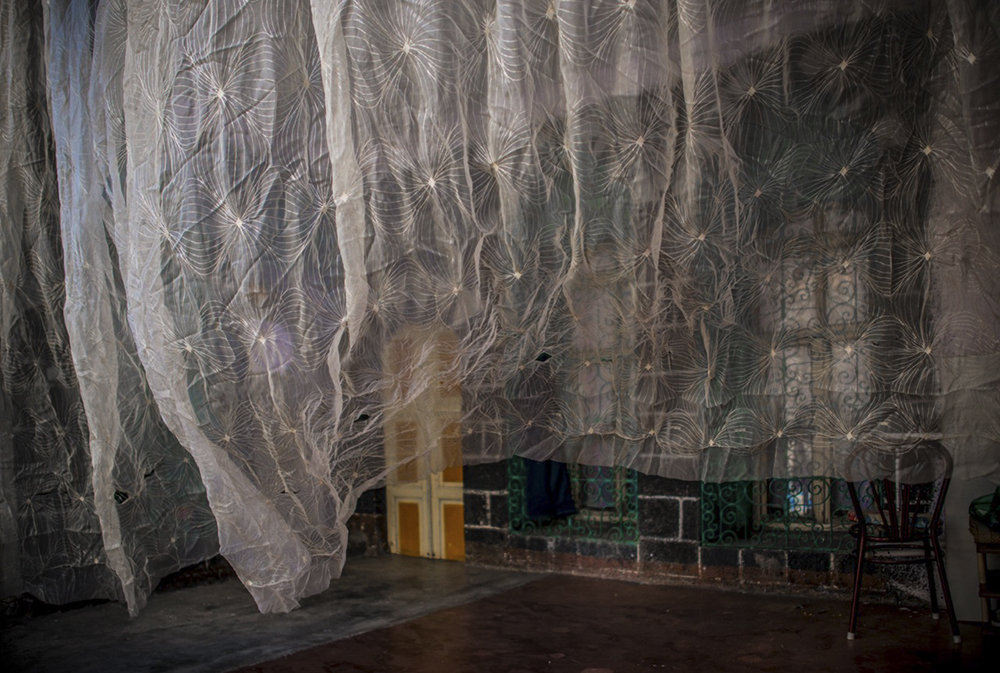
Veiled entrance of a house that is said to have belonged to Armenians, and is now inhabited by a Kurdish family.
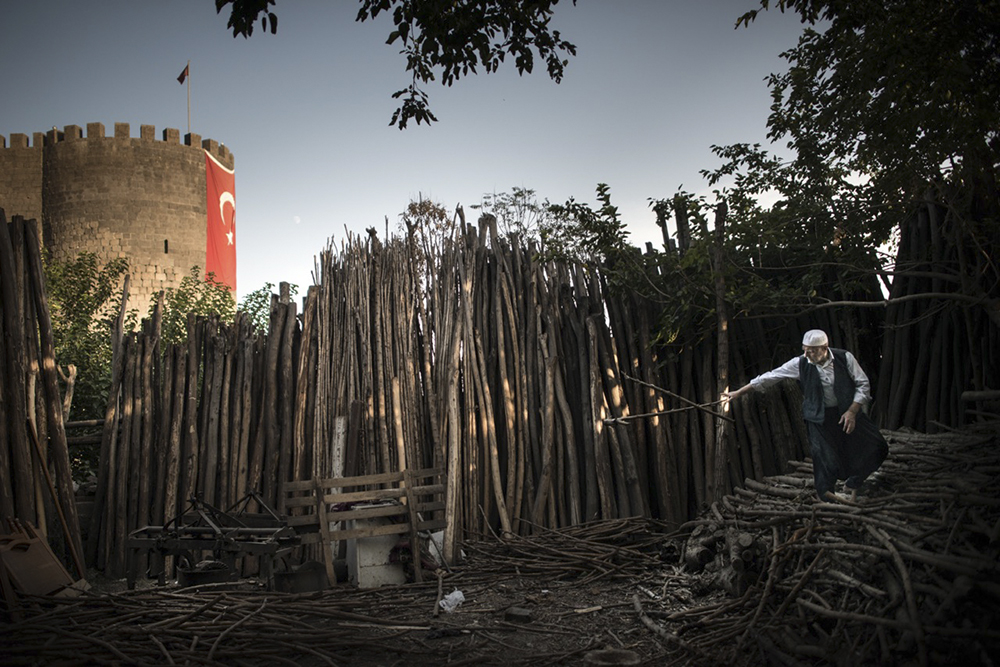
Suphi Temes, 77, has been working with Kavak trees for 54 years. Kavak trees are cultivated in the UNESCO protected Hevsel gardens that surround the fortress of Sur in Diyarbakir. People buy the wood to heat their houses in winter. The trees are also used in construction.
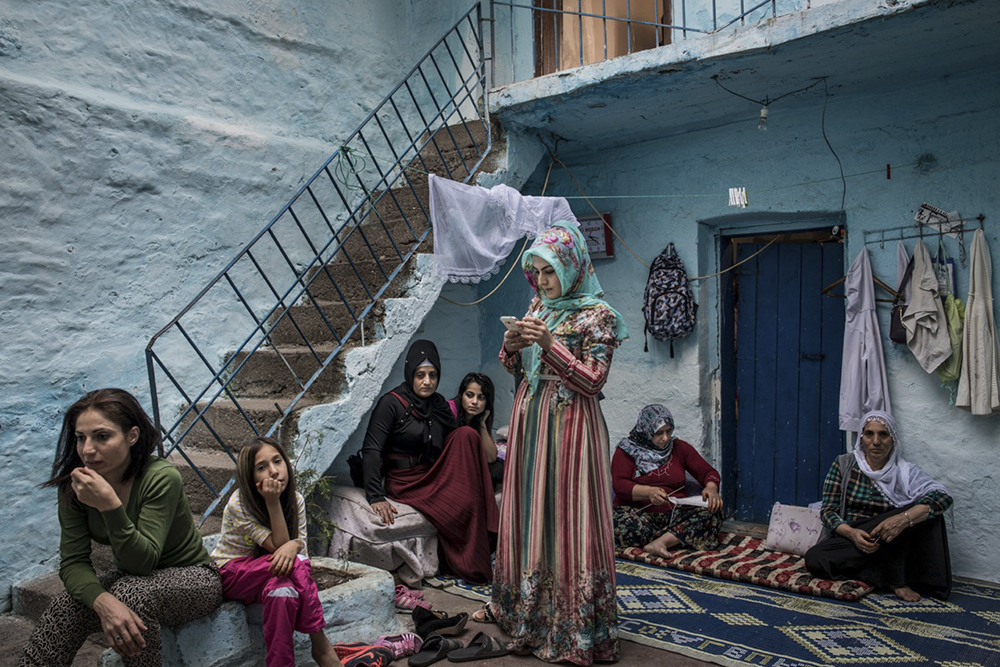
People in Sur fled their houses during the clashes in 2015-16. Many returned to find their houses looted. The family of Halide (far left), Gulistan (in the middle), and Kader (far right), a family of 14, left Sur for 2 months in winter 2016. Only a young man remained to take care of the pigeons and dogs. People were looting the neighborhoods at the time, and someone stole a Kalashnikov gun from their house.
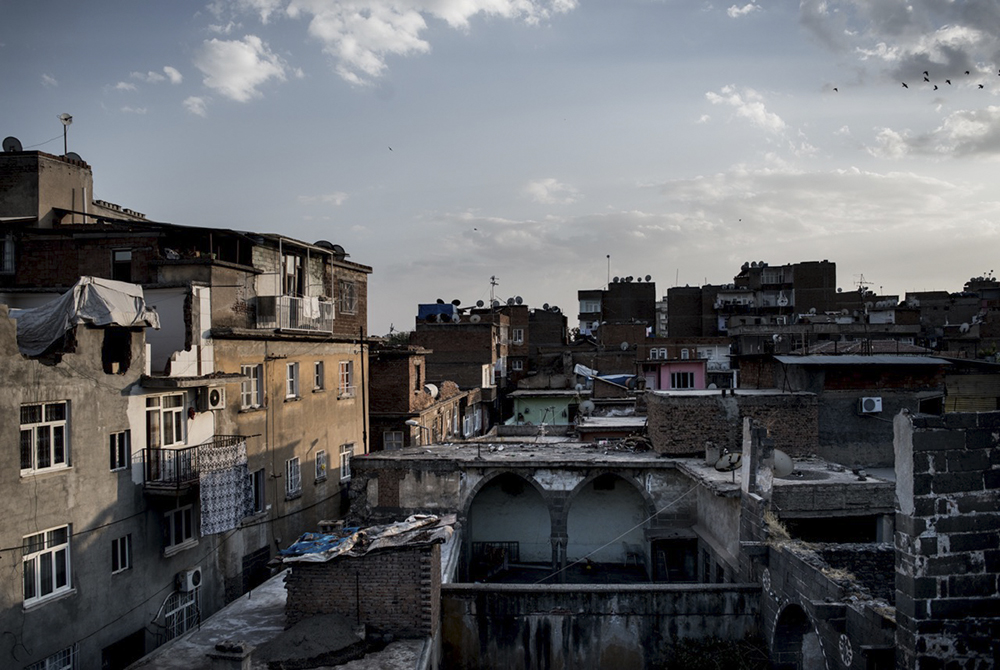
View of buildings and houses in Sur, many of which have been destroyed by time or the recent clashes. The Turkish government plans to turn Sur into a touristic center, destroying and reconstructing many of houses, leaving the older historical ones. People living in Sur are offered a low amount as compensation for their houses.
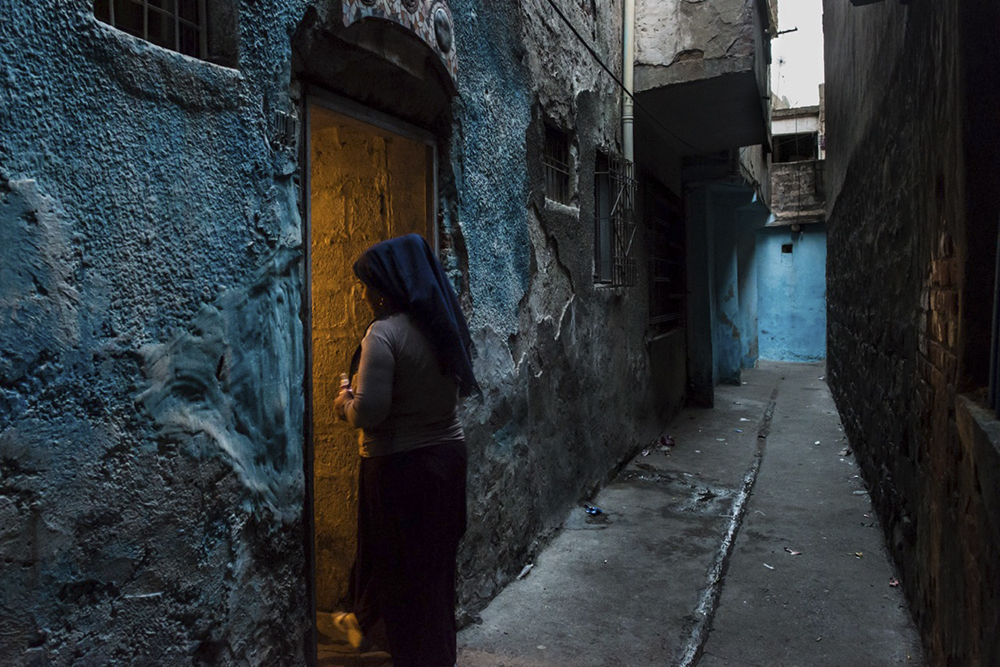
Sur is a labyrinth of narrow streets, known only to the locals.

Kurdish storytellers, the Dengbej singers, gather and sing stories of love and hate, in the Dengbej House. On this day, one of the 200 singers had died. According to several residents, the house used to belong to Armenian family.
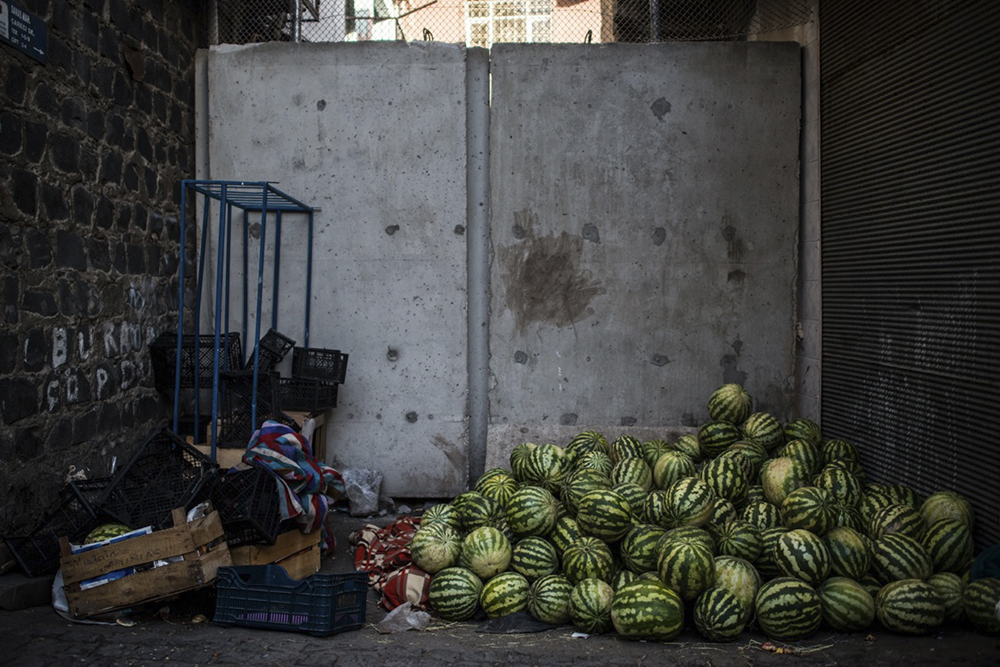
About one-fourth of Sur district has been blocked by the Turkish government, with no people left inside.
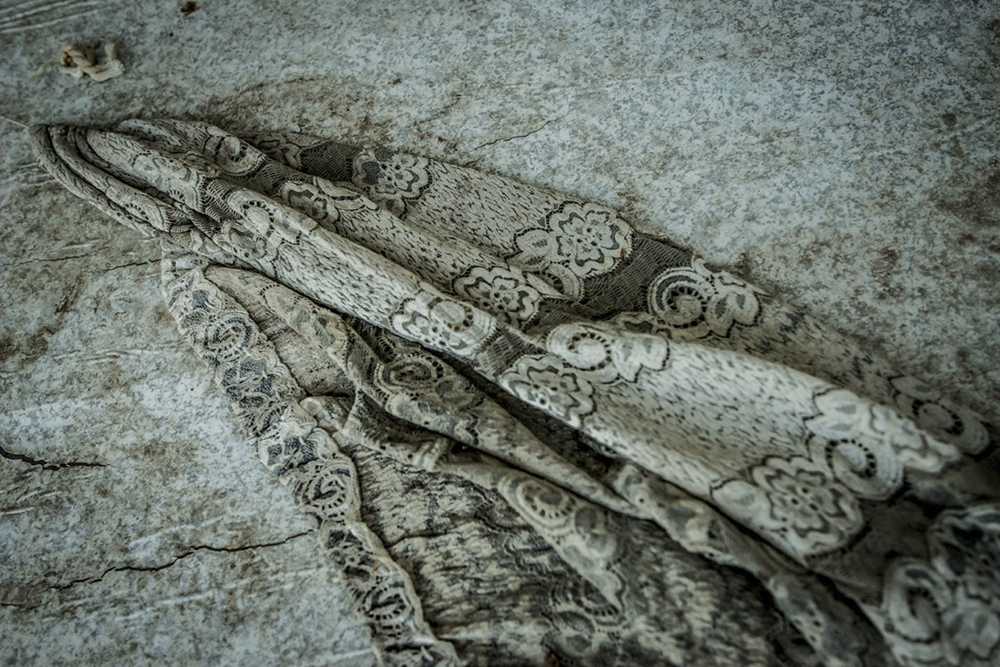
Curtains have fallen off the windows of a house left empty after the death of the last Christian Armenians in Diyarbakir, Sarkis and Baydzar.
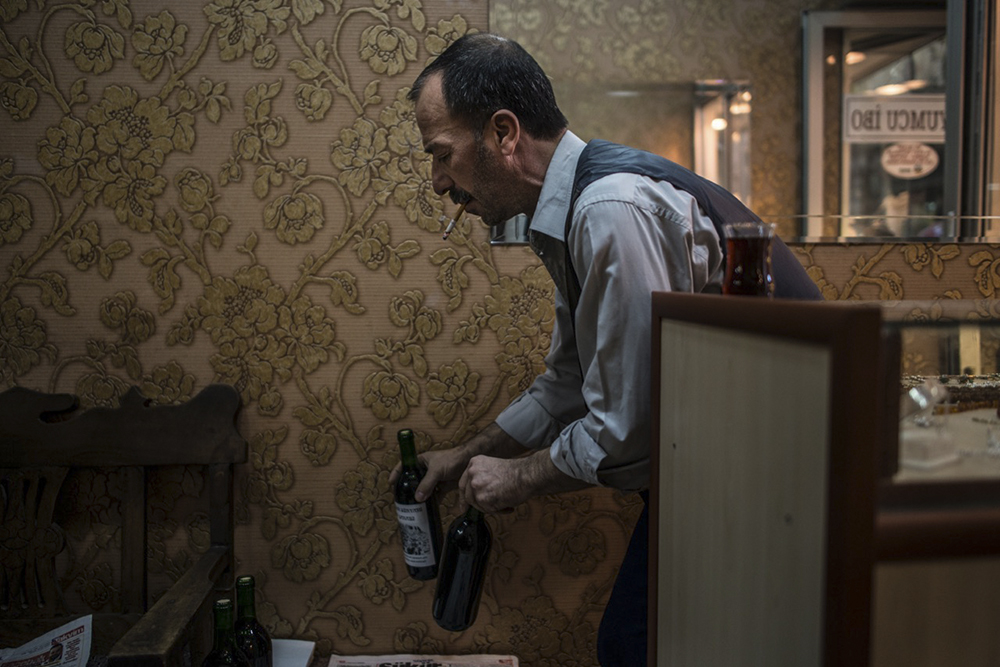
Assyrian goldsmith Ibrahim sells his homemade wine in his jewelry store called "Kuyumcu Ibo". The wine is considered one of the best in Diyarbakir.
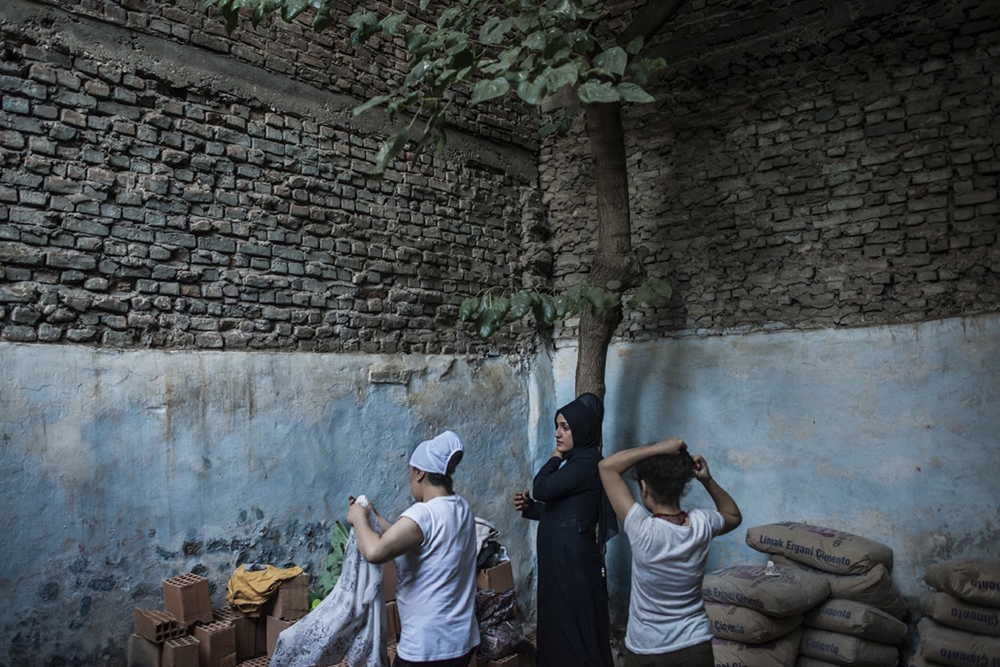
A family returns home after the clashes between Kurd and Turks calm down. As they reconstruct their old home, they often have to dress outside.
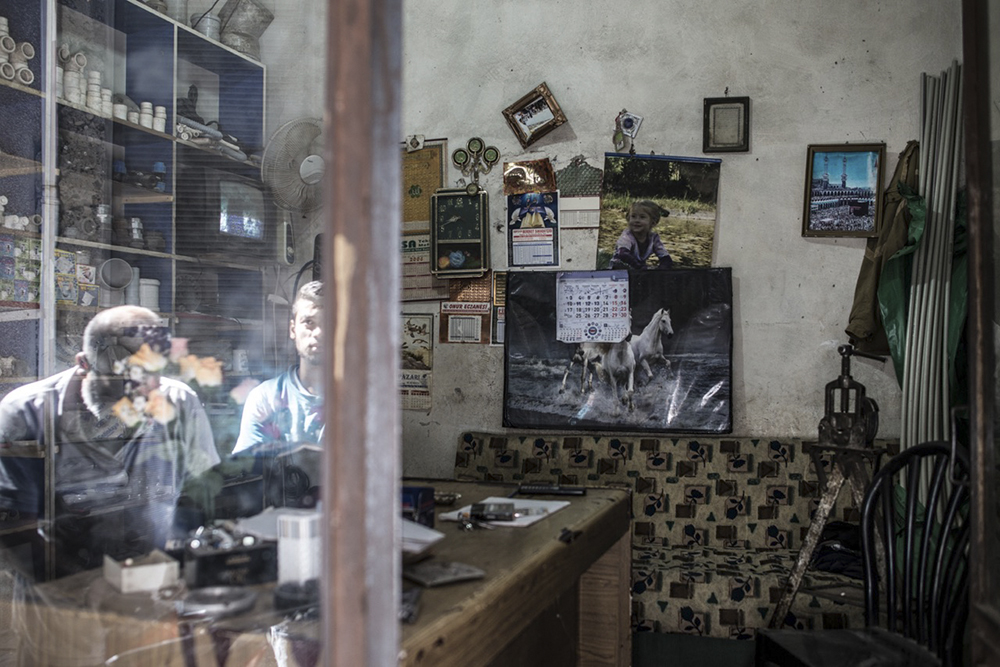
Shops begin to operate again in Sur as some hope is seen in peace that may be temporary.
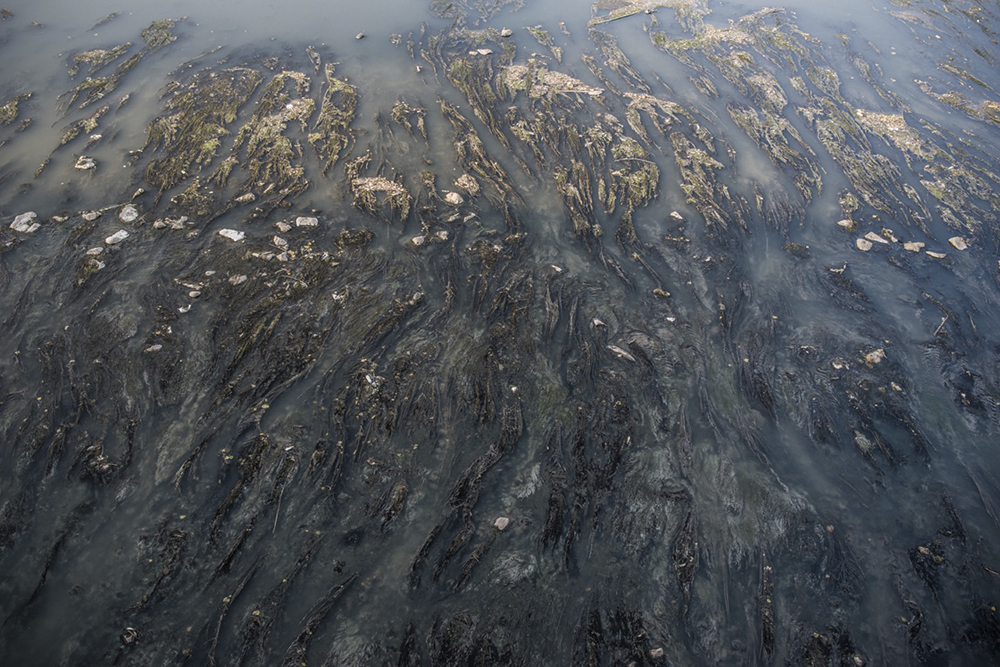
Tigris river that flows near the Sur Fortress, is symbolic for all nations and ethnicities who inhabit the area of Diyarbakir.

Hands of a Kurdish woman in the streets of Sur.
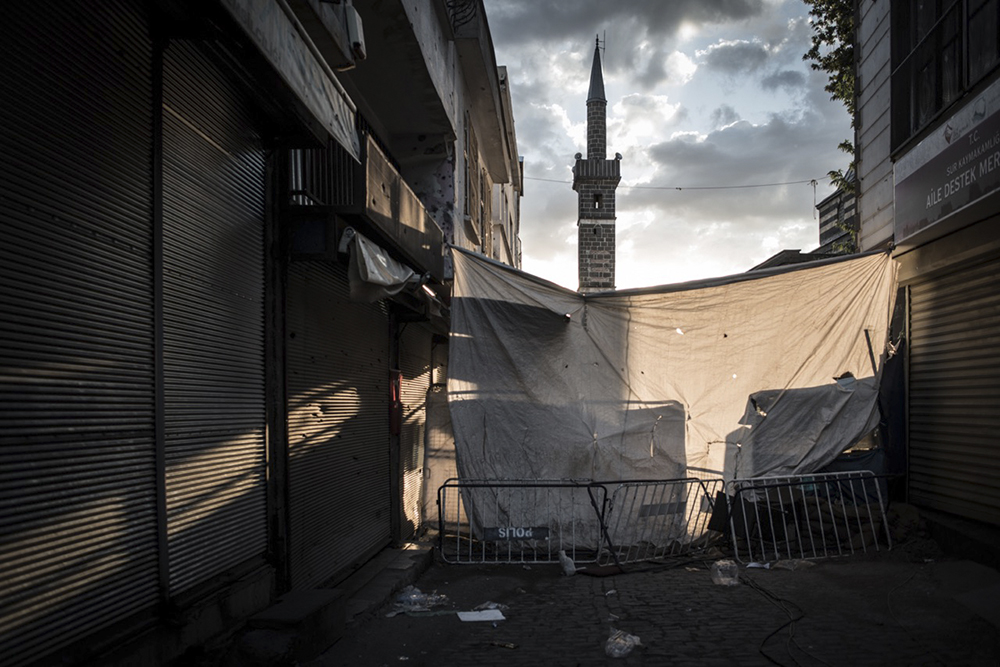
Being in the area that is blocked by the government, the 16th century symbol of Diyarbakir, the Four Footed Minaret, is no longer accessible to anyone, except Turkish police.
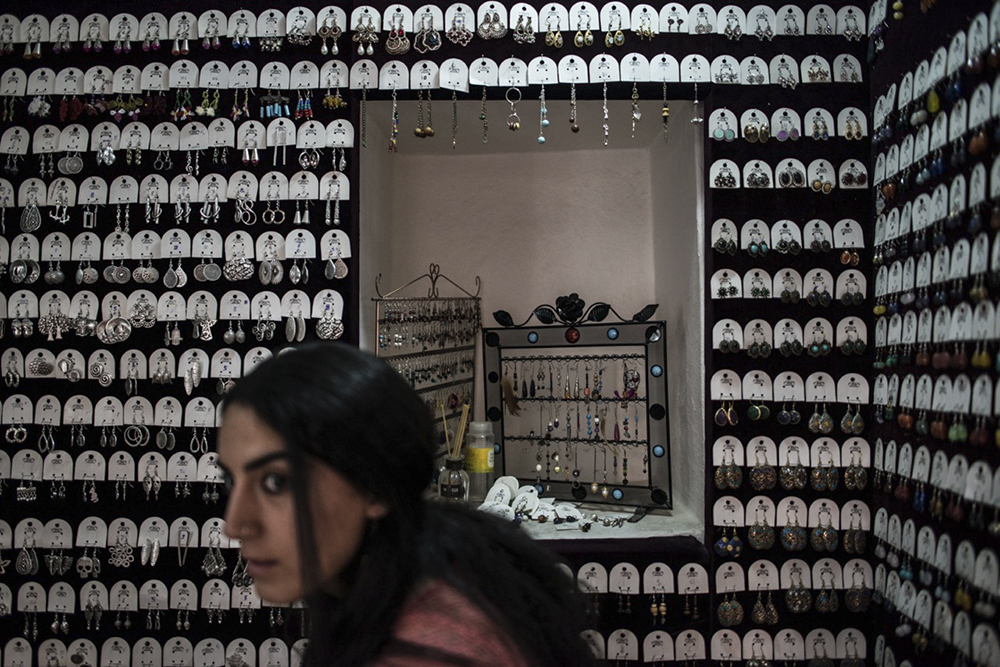
One of Sur’s ethnic stores, Ilkiz, was robbed while being closed because of clashes.
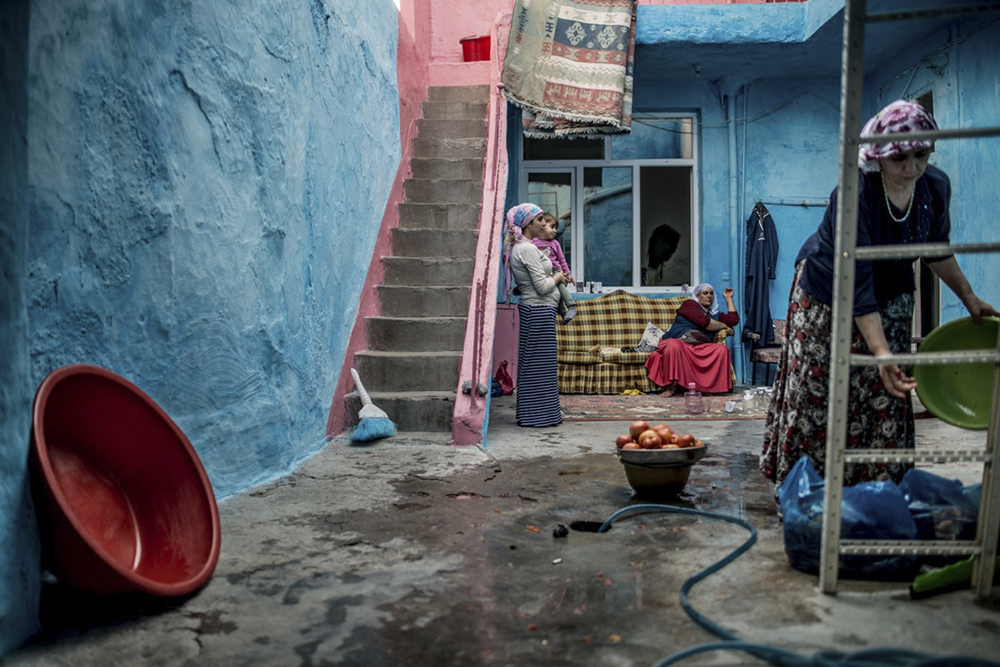
Kader (in the center) says many houses in Sur will be destroyed as part of the gentrification plan of the Turkish government.
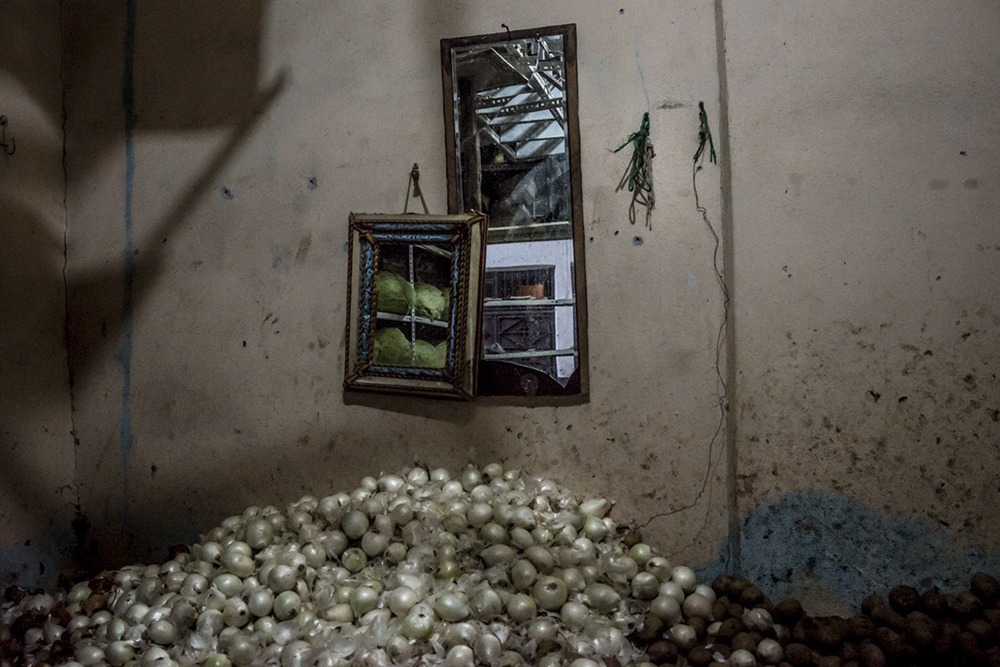
Markets and stores did not operate in Sur during periods of curfew imposed by the government.
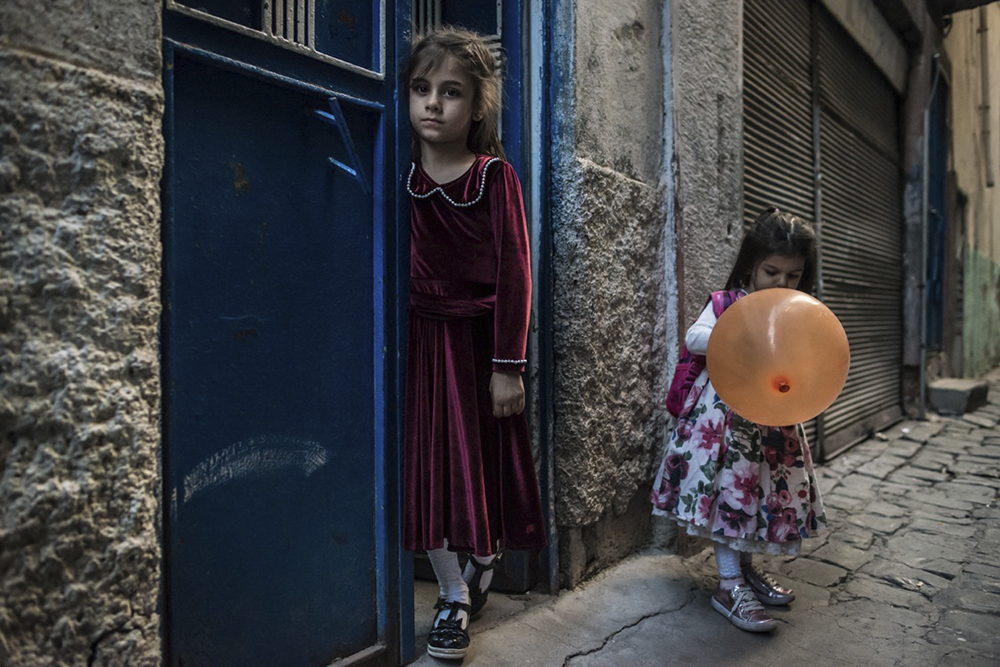
Ilknur, 6, and Berçem, 2, play in one of the numerous backstreets of Sur, preparing for a family gathering.
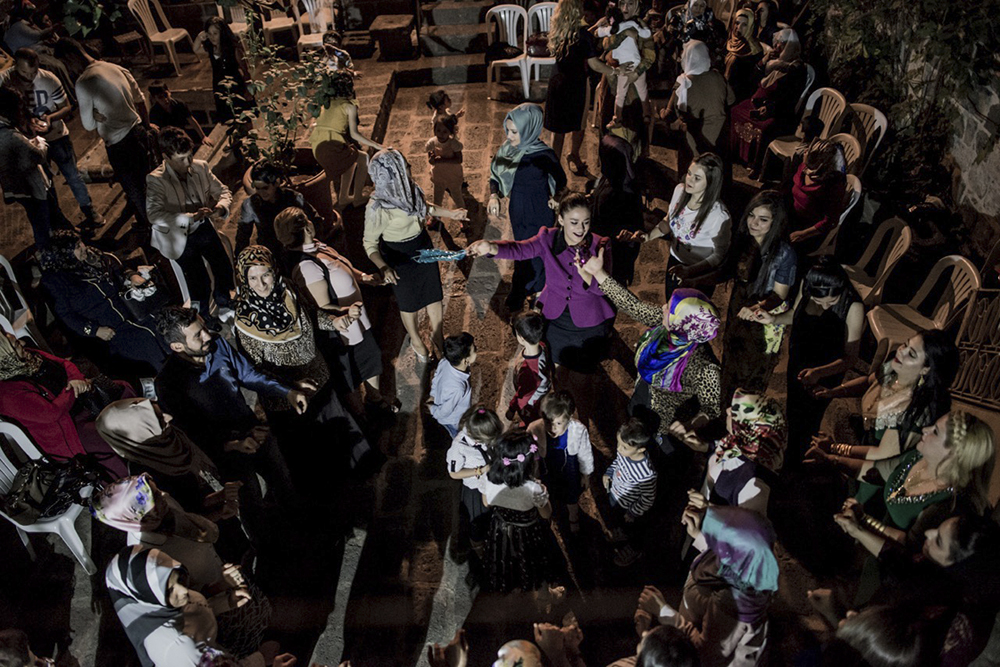
Kurdish family and friends celebrate an engagement in the center of Sur. The house, used for different events, belonged to an Armenian family about a hundred years ago. Several meters away from the house, Turkish police check points guard the part of Sur which is blocked for civilians.
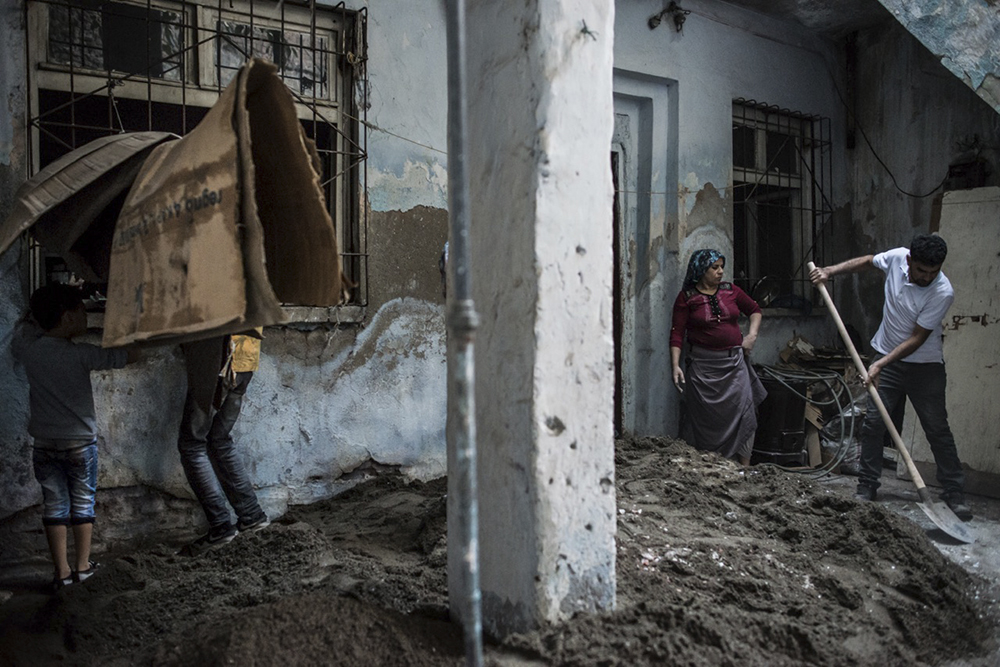
People try to reconstruct and revive their neighborhoods after the recent events, which may repeat any time.

Grave of a Kurdish Imam is covered in grass in an alleyway in Sur.
 Videos
Videos Photos
Photos




Write a comment